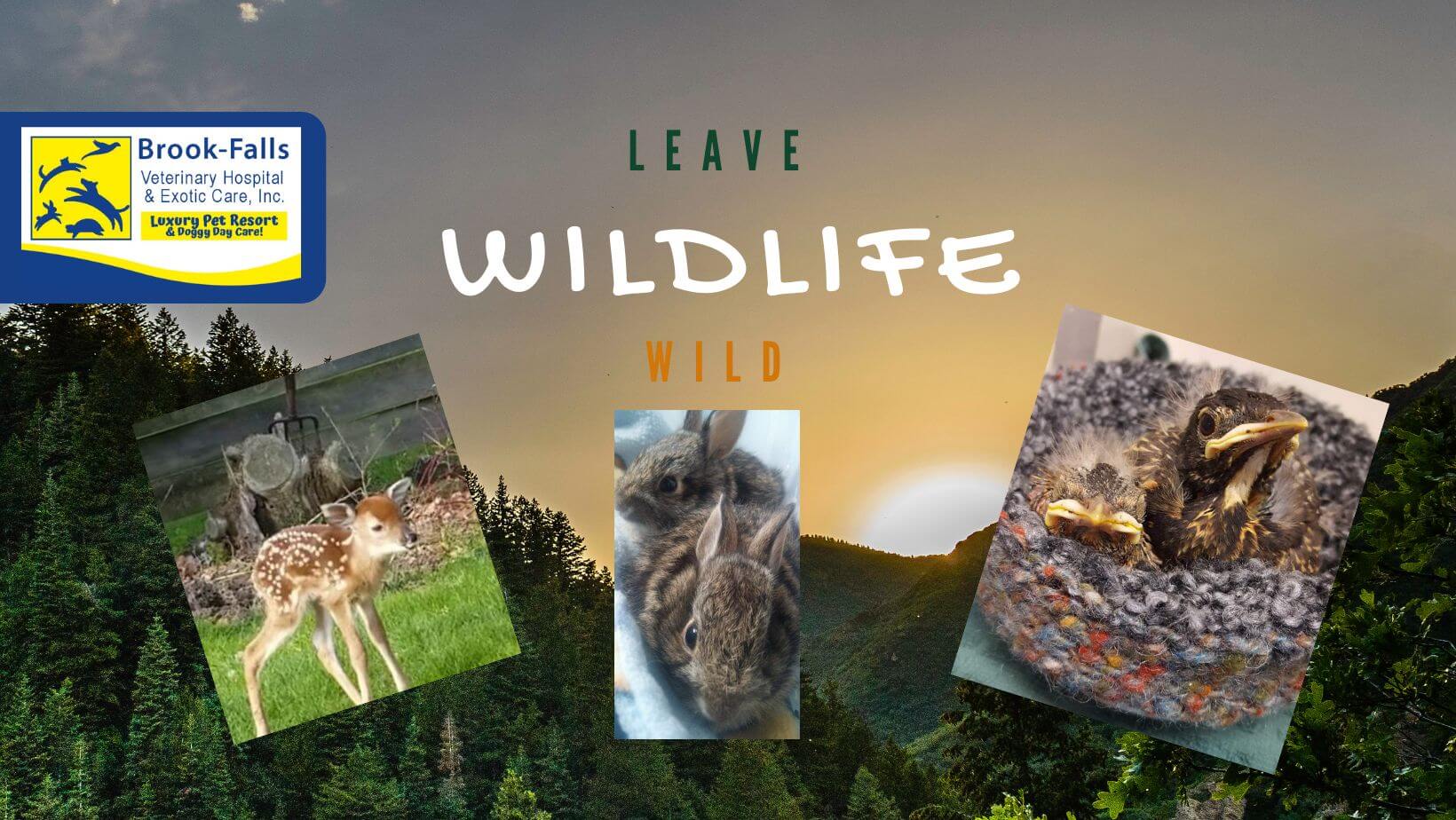
Leave Wildlife Wild
We love animals! Do you love animals too? Do you know what to do if you encounter wildlife? It is important to observe wild animals at a distance and be respectful that they are indeed wild. During the warmer months of spring and summer, there is an increase in human-wildlife encounters. As these instances increase, well-intentioned humans interfere in wildlife situations because they jump to conclusions that the wild animal might need saving or is orphaned. The best chance for baby wildlife survival is with their mother. Do you know how to tell if a wild animal is truly orphaned?
The Wisconsin DNR website has references for each wild species you might encounter, and think it is orphaned. These detailed reference handouts tell you exactly what to look for and do if you happen upon unattended wildlife. One of the main thought processes should be to keep away from a nesting site and do not let dogs or cats near the area as well. The DNR quick reference guides will help you to determine if the wild animal is indeed orphaned and what action you should take. The following seven tips indicate situations when you should contact a wildlife rehabilitator immediately.
- The animal’s parent is dead or no longer in the area
- The animal has been attacked by a predator
- The animal is bleeding and appears injured
- The animal is very skinny, weak, cold, or soaking wet
- The animal has diarrhea
- There are flies, fly eggs, maggots, or a large number of ticks, lice, or fleas seen on the animal
- The animal is in a dangerous location
If the animal is truly orphaned and you are in the Washington county area, you can contact Wanakia Wildlife. Wanakia Wildlife is a rehabilitation and education center that is dedicated to the rescue, rehabilitation, and release of native Wisconsin wildlife back to their natural habitat, as well as promoting public awareness of wildlife issues. Young orphans that are brought to Wanakia that are too immature to be on their own, are provided with the proper habitat and diet in which to grow. Once they reach a stage of independence they are then let go back into their natural habitat. Any ill and injured orphans are provided with appropriate medical treatment, diet, and habitats as they recover to total health.
There are five main reasons why it is important to keep wildlife wild:
- Stress response: wild animals are naturally cautious of humans, domestic animals and predators. Being too close to a human who is trying to help may cause a high-level stress response which may lead to injury of itself or those who are trying to help
- Dietary needs: wild animals have very specific and diverse nutritional needs that are not easily met in captivity
- Disease: wild animals carry diseases that can be spread to humans or domestic animals.
- Non-natural behaviors: a well-intentioned human may lead a wild animal to trust humans which may lead to their demise later in life. They may also become reliant on humans to feed them and lose their natural instincts to find food sources.
- It is illegal to attempt to rehabilitate a wild animal unless you are a licensed rehabilitation facility.
The most commonly reported species that are often found alone and suspected to be orphaned would be baby bunnies, songbirds, turtles, and fawns.
?
Bunnies:
A normal cottontail’s nest is just a shallow hole scraped into the soil that is lined with the adult rabbit’s own fur and some dried grasses. Nests can be made in the middle of a lawn, by a busy sidewalk, on a playground, or in a garden. An adult mother rabbit does not typically stay with her young but visits the nest site at dawn and dusk for quick feedings. It is normal for young cottontails (1-3 weeks old) to start exploring outside their nest for short periods of time. The characteristics of a bunny that is ok to be on its own are: it is about the size of a softball, the eyes are open, and its ears are being held upright
If you should happen upon a baby bunny that is younger than the description above, you should try to find the nest and return the baby and the mother will likely return. You can keep an eye on the nest site from a distance, but you should not continue to visit the nest site. One way to determine if the nest is abandoned and the baby is orphaned is by placing similar nesting materials in a crisscross pattern over the nest. If the crisscross nesting materials pattern has been disturbed the following morning, that means that the mom has returned to care for the baby.
?
Songbirds:
Songbirds can make nests just about anywhere: a tree, shrub, birdhouse, artificial structures like porch lights, or even on the ground. Most adult songbirds will incubate their eggs for roughly two weeks. Once the eggs have hatched, the babies will be featherless nestlings. They will remain in the nest for roughly two more weeks during which time they are completely dependent on the adult songbirds for warmth and food. Young songbirds will leave the nest (“fledge”) before all of their flight feathers are grown in and often cannot fully fly for several more days. Typically, you can see these guys hopping around on the ground or even attempting some practice flights. If you find a featherless bird that is uninjured, it most likely just needs to be placed back into its nest.
Turtles:
In the months of May and June it is peak nesting season here in Wisconsin for its 11 native turtle species. Female turtles lay their eggs on land, bury them, and leave them to hatch on their own. Young turtles who are just hatched are completely independent and self-sufficient.
Turtles can be hit by motor vehicles when crossing the street looking for suitable soil conditions to lay their eggs. If it is safe conditions for you and other drivers, you can help a turtle cross the road. Be sure when assisting in road crossing that you are moving the turtle in the direction in which it is traveling. Turtles have a familiar territory that females will return to on an annual basis to lay their eggs. Take extra caution if you assist a snapping turtle crossing the road- in this case, you should use a shovel or board to scoop up the turtle or use a rake or stick to push the snapping turtle across the road. Snapping turtles have very long necks which can reach around to the back of their shell. Be Careful!
Fawns:
If you happen upon a fawn all alone, chances are mom is nearby. The best thing to do is leave the area and them alone. You do not want to unintentionally give their position away to predators. You may monitor them from a distance to see if mom will return to feed the fawn and even possibly move them to a new location. If the fawn is in an unsafe location such as a road, it is okay to move it back by several yards, but it is suggested to do so while wearing gloves and a facemask to protect your health as well as theirs. Not all wildlife rehabbers take fawns due to chronic wasting disease (CWD).
In conclusion, not all babies who are spotted alone are actually orphaned. Be sure to research what you can safely do to try and help. If they are truly orphaned, you should always call a rehab facility before just bringing an animal to them. If you come upon an injured animal (broken leg, wound, hit by car), you should call the DNR for how best to proceed and where best to take the animal for care.
For more resources and scenarios please visit the DNR website.
